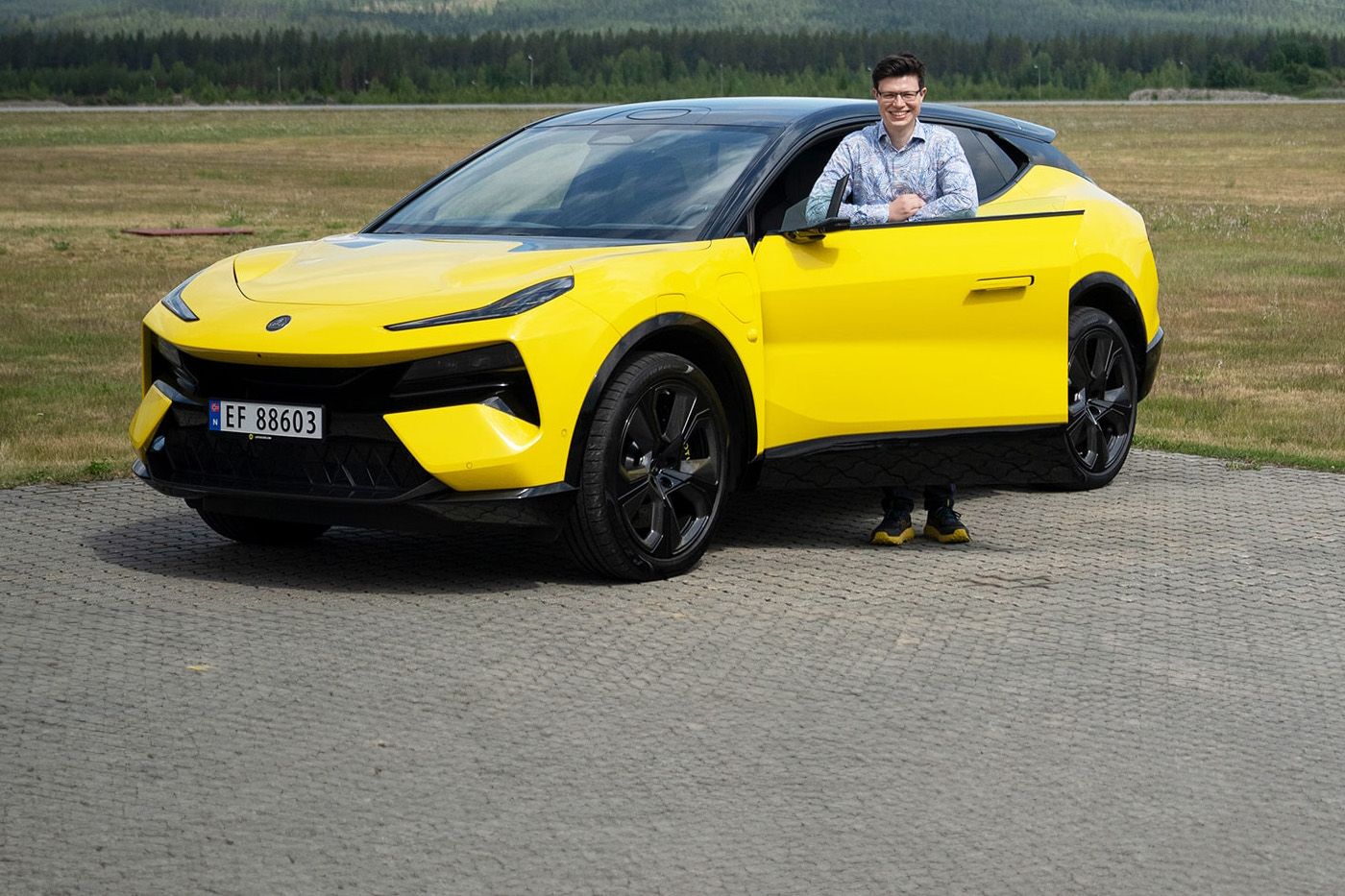
Lotus Eletre: Geely’s luxury flagship faces its first test
In Lotus’ previous two-seaters, comfort was a foreign concept – lightweight construction and sportiness were far more important. For most models, just getting into the car was an acrobatic act, and the roaring engines were a job creation measure for the hearing aid industry.
With the Eletre, everything is different. Almost. The monstrous acceleration remains, but other than that, the SUV has little in common with the previous two-seaters. It is not the first time that Chinese parent company Geely has opted for this strategy. Smart also buried its previous (also two-seater) niche vehicle and replaced it with an electric SUV. But will it work for a tradition-rich sports car manufacturer like Lotus? A two-day drive with the Eletre through the mountainous Oslo countryside should provide answers.
Larger than it looks
Measuring 5.10 metres in length, 2.23 metres in width (or 2.13 metres if you opt for the digital mirrors), and a height of 1.63 metres, the Eletre is clearly outside the dimensions previously known from Lotus. However, without knowing the exact dimensions, the car seems much smaller. The design, especially the two-colour paint, conceals the sheer size – especially the height. From the lower edges of the windows onwards, all Eletres are deep black, which, together with the long and, at the same time, very horizontal front bonnet, creates the impression of a relatively low vehicle – a successful optical illusion. Various beads and air vents conceal its bulky appearance, making it look much more filigree than, for example, similarly sized BMW SUVs.
Interior & comfort
After getting in, you will unmistakably find yourself in a sports car – if it weren’t for the height and the comfortable entrance, you could easily think you’ve landed in a Lotus two-seater again. The inflatable seat bolsters grip passengers tightly, while the bulky centre console makes the interior cramped enough to make you feel connected to the car and the road – but not so cramped as to cause claustrophobia. This same centre console not only has hidden storage and cup holders – it also houses two speakers for the sound system (more on this later).
For the passengers
Perhaps the rear seats are where the influence of the Chinese parent company is most noticeable: in China, many people prefer to be driven rather than to drive themselves – and Lotus has taken that into account.
While in classic sports cars, the second row of seats is either non-existent or, at best, a makeshift for people measuring less than 1.40 metres, Lotus now offers two comfortable armchairs. These not only massage, cool and heat on demand, they also provide sufficient lateral support in case the driver rips around the curves. Between the two seats is a centre console with plenty of storage space, an extra display, and controls for the air conditioning, the passenger seat and the music. On the other hand, navigation, the planning of charging stops, and games are only available on the front display – something that Lotus could improve.
The panoramic glass roof provides a view of the sky. It can go from completely transparent to completely opaque in a wide range of settings – with automatic control depending on the amount of sunlight.
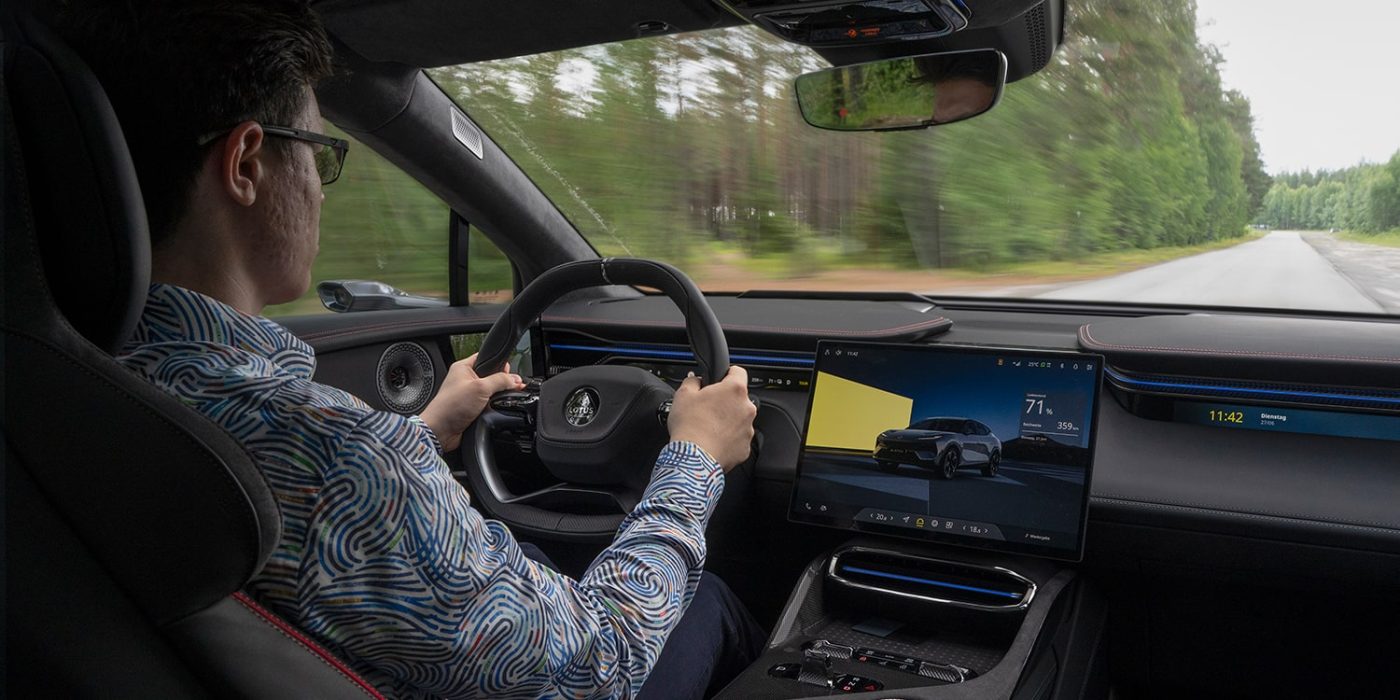
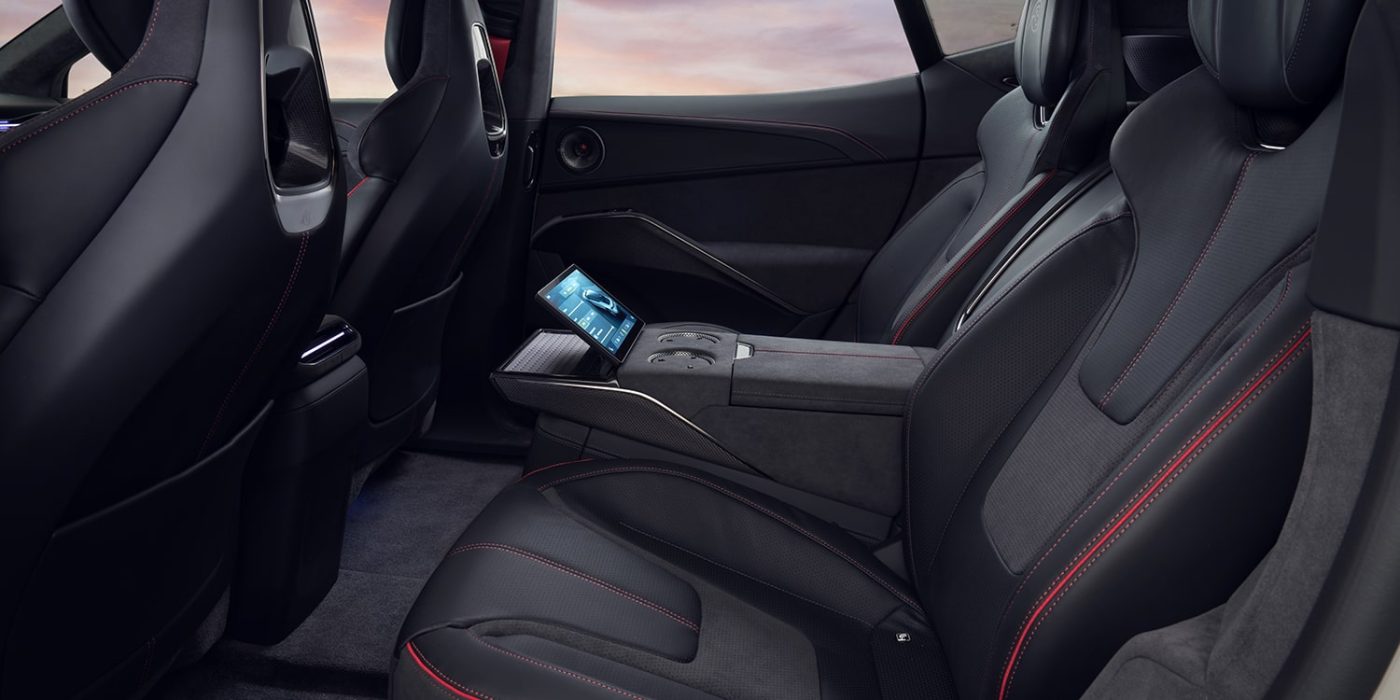
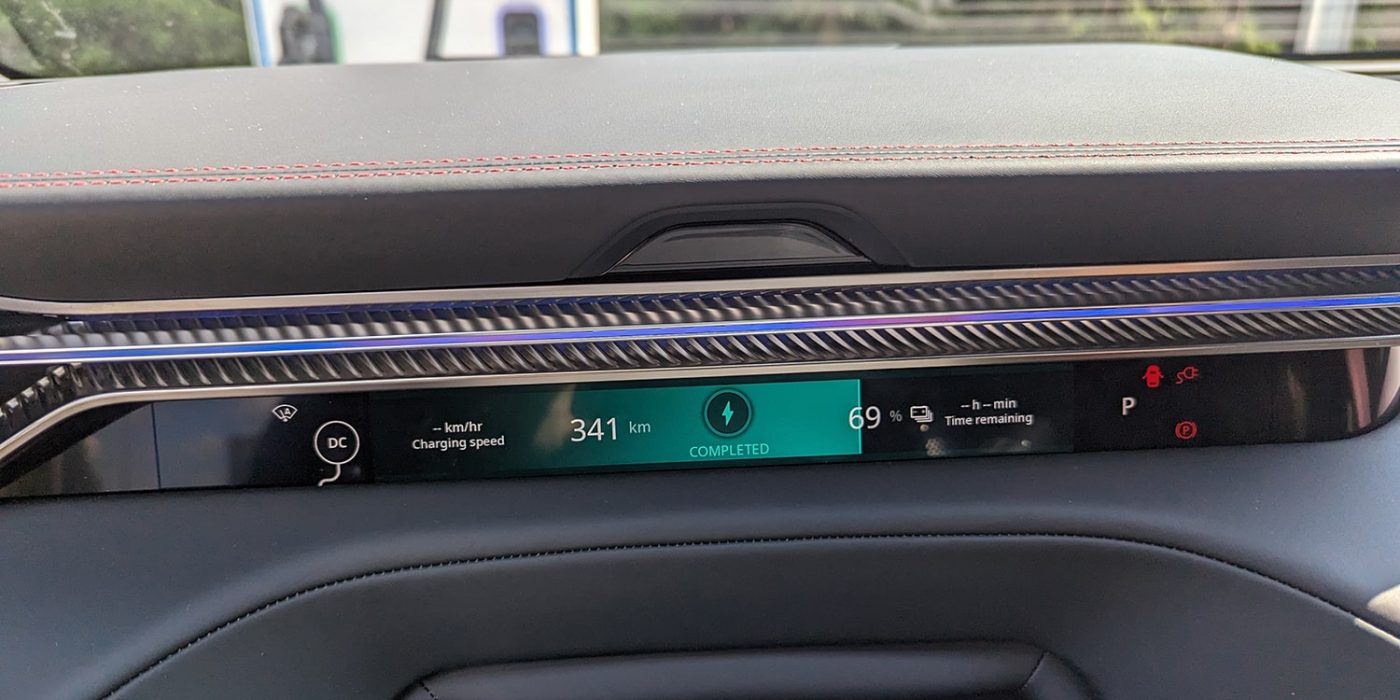
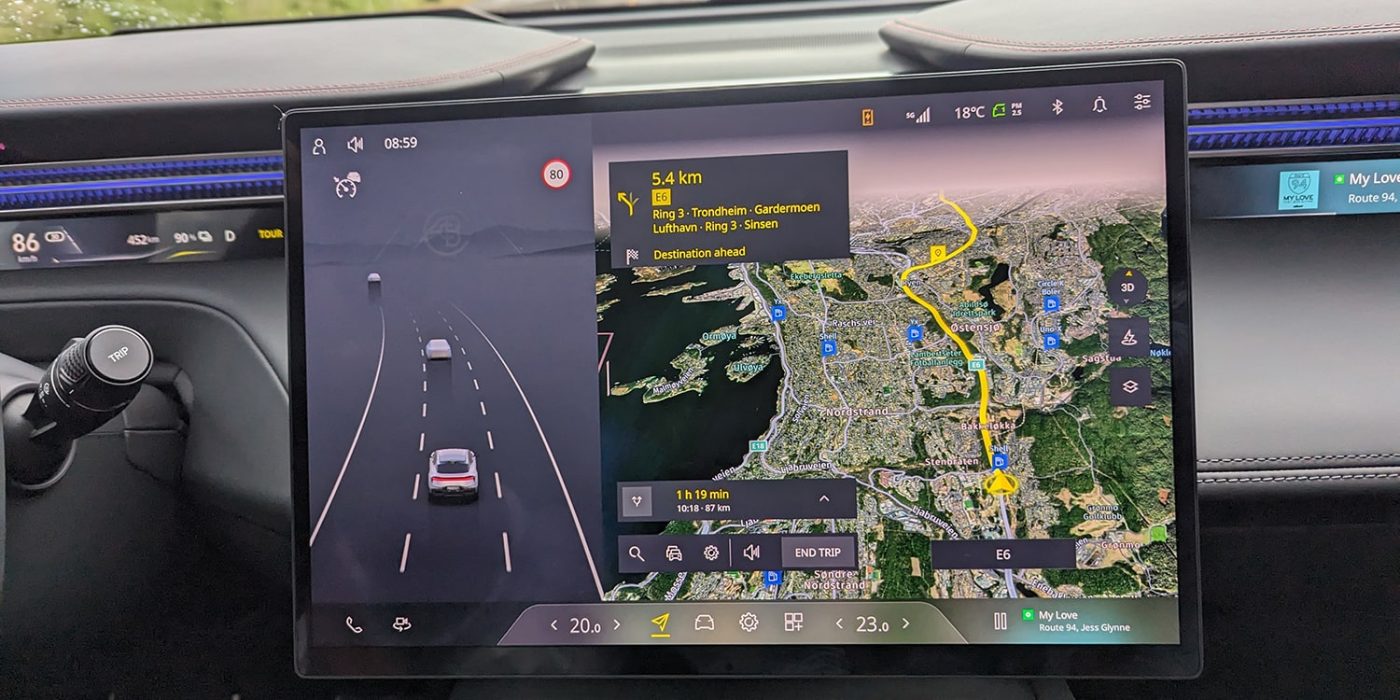
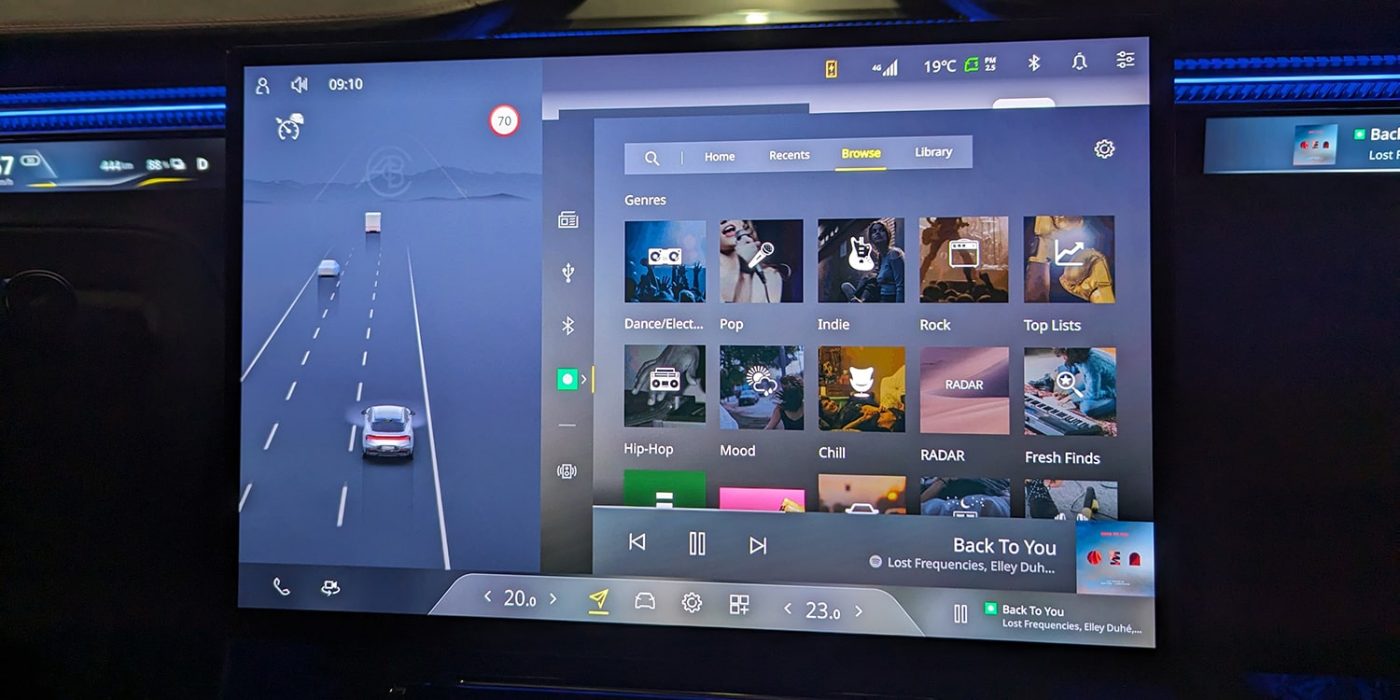
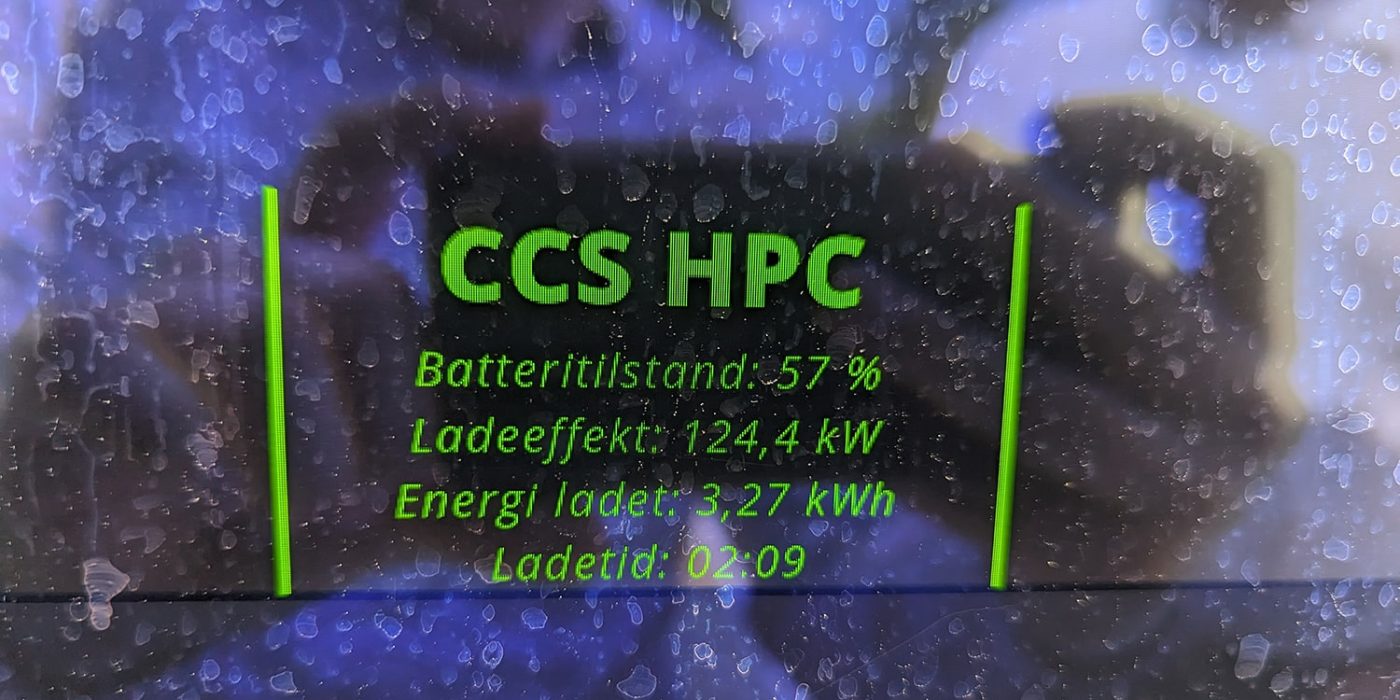
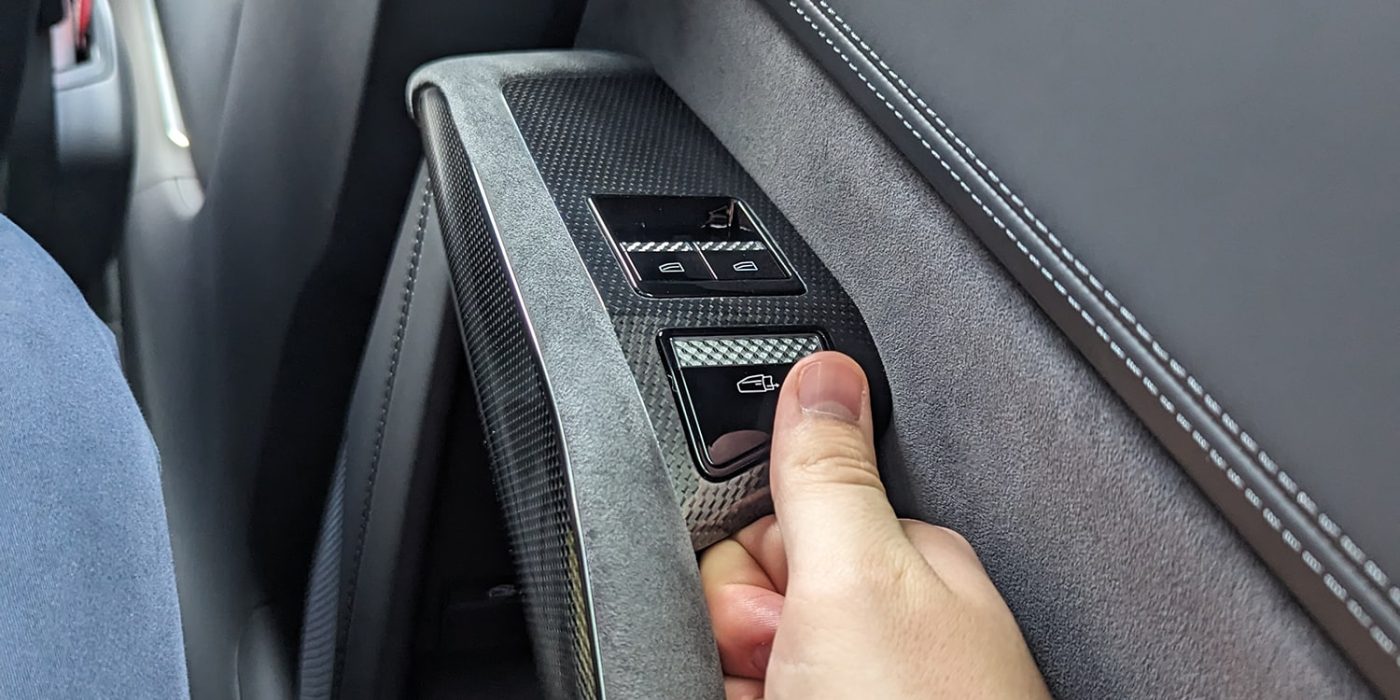
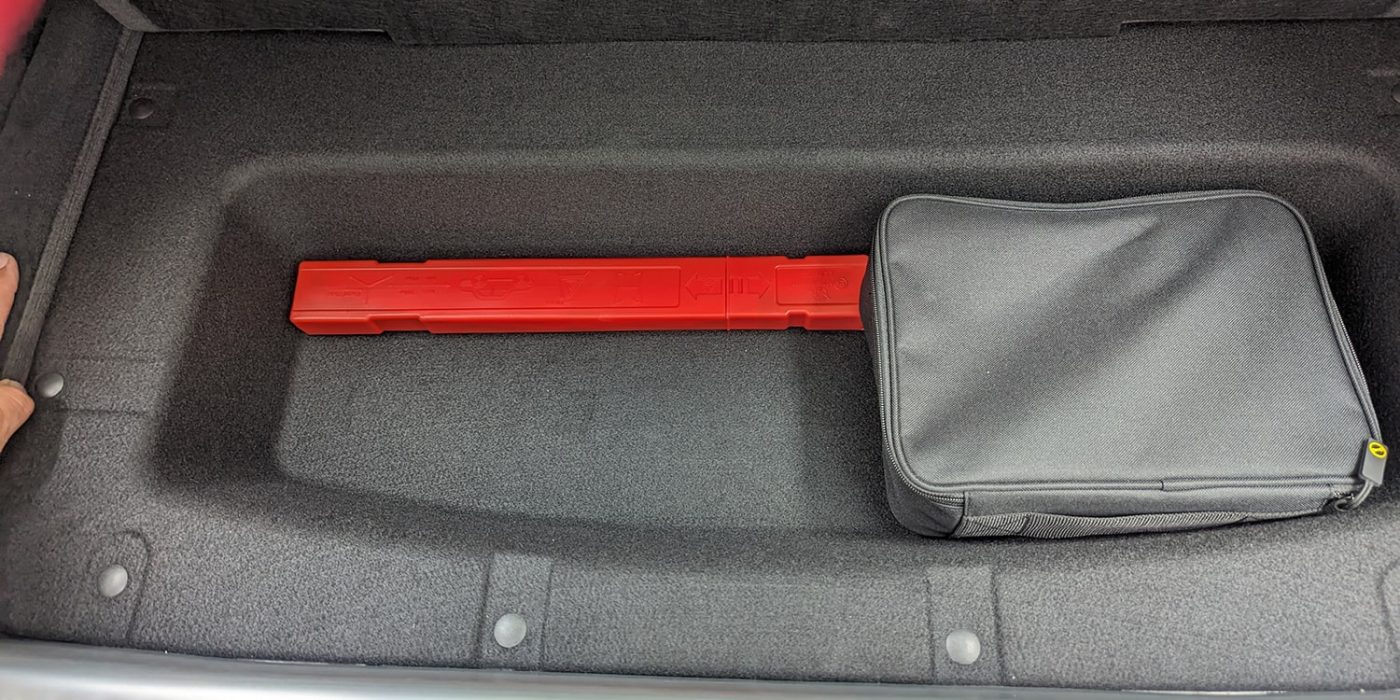
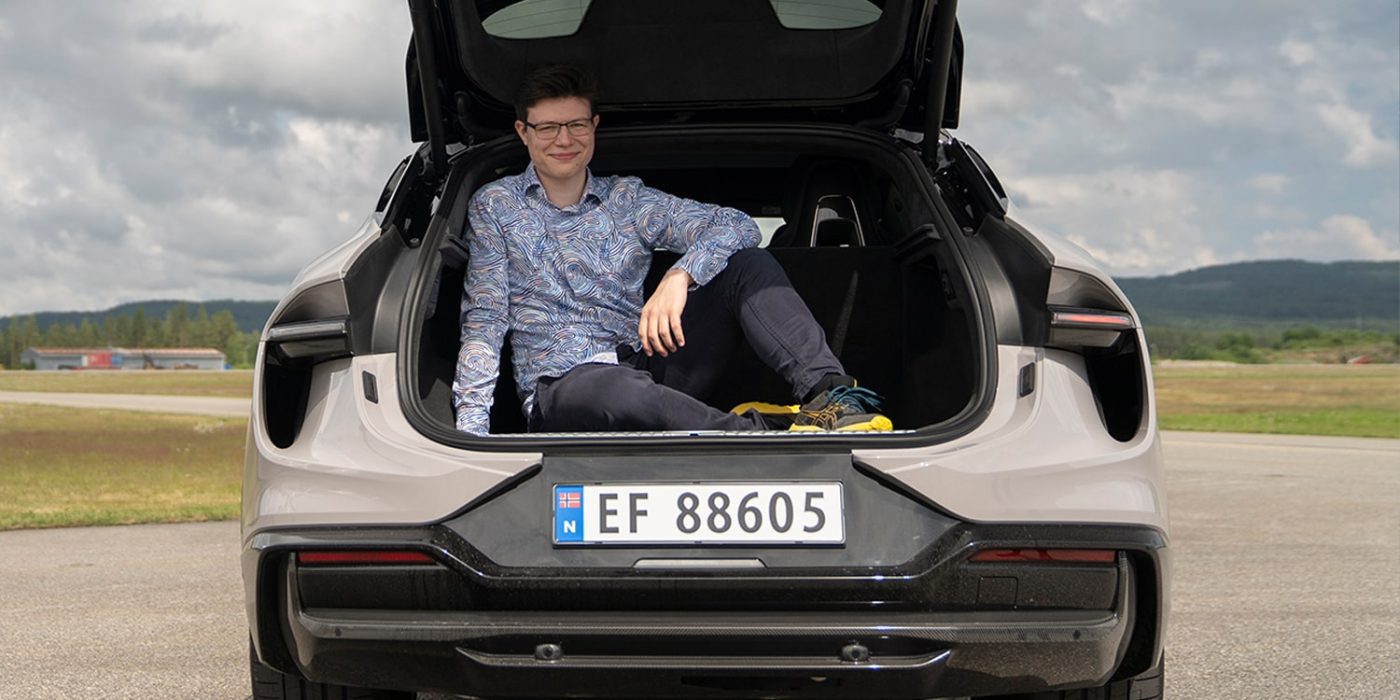
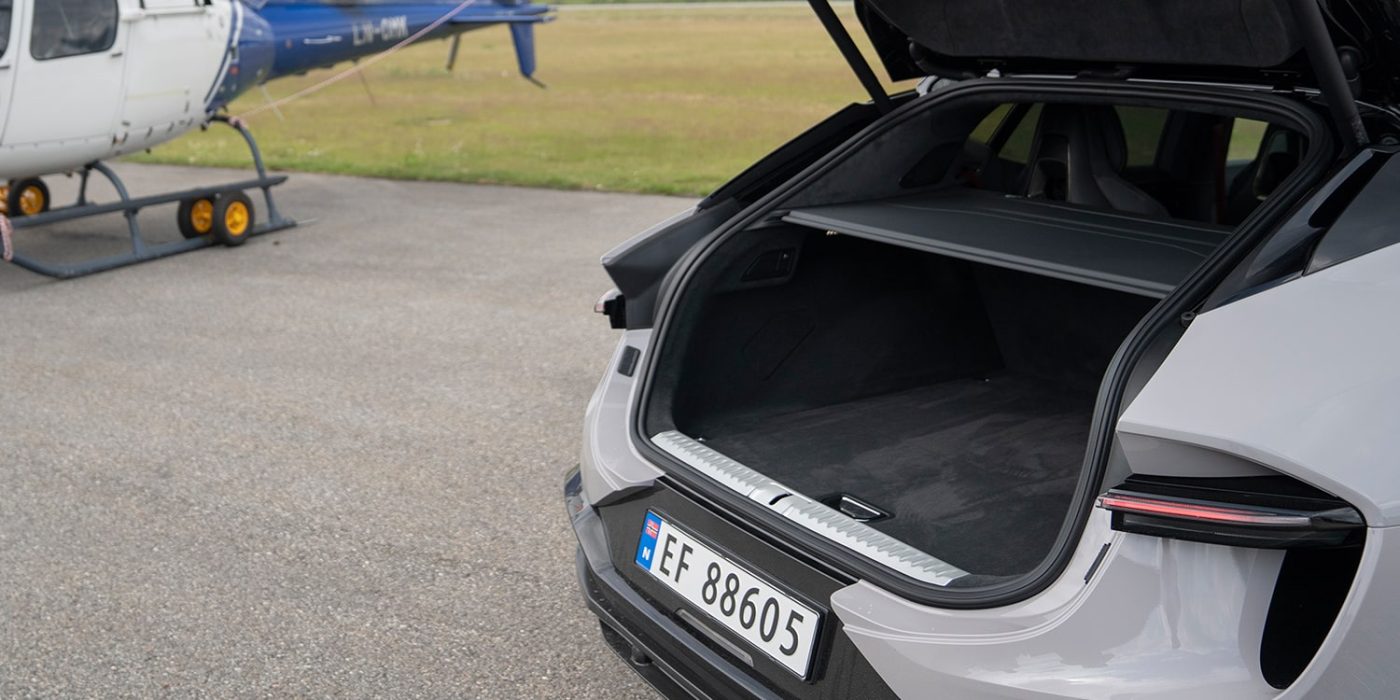
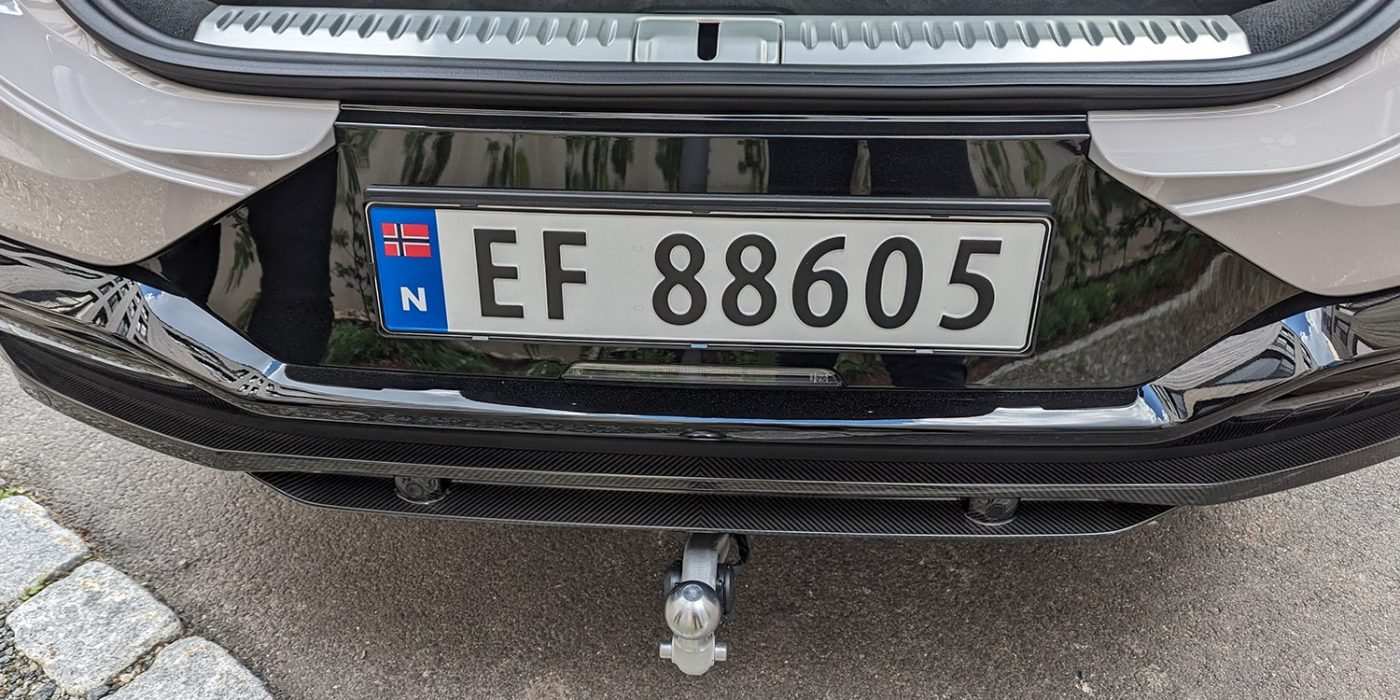
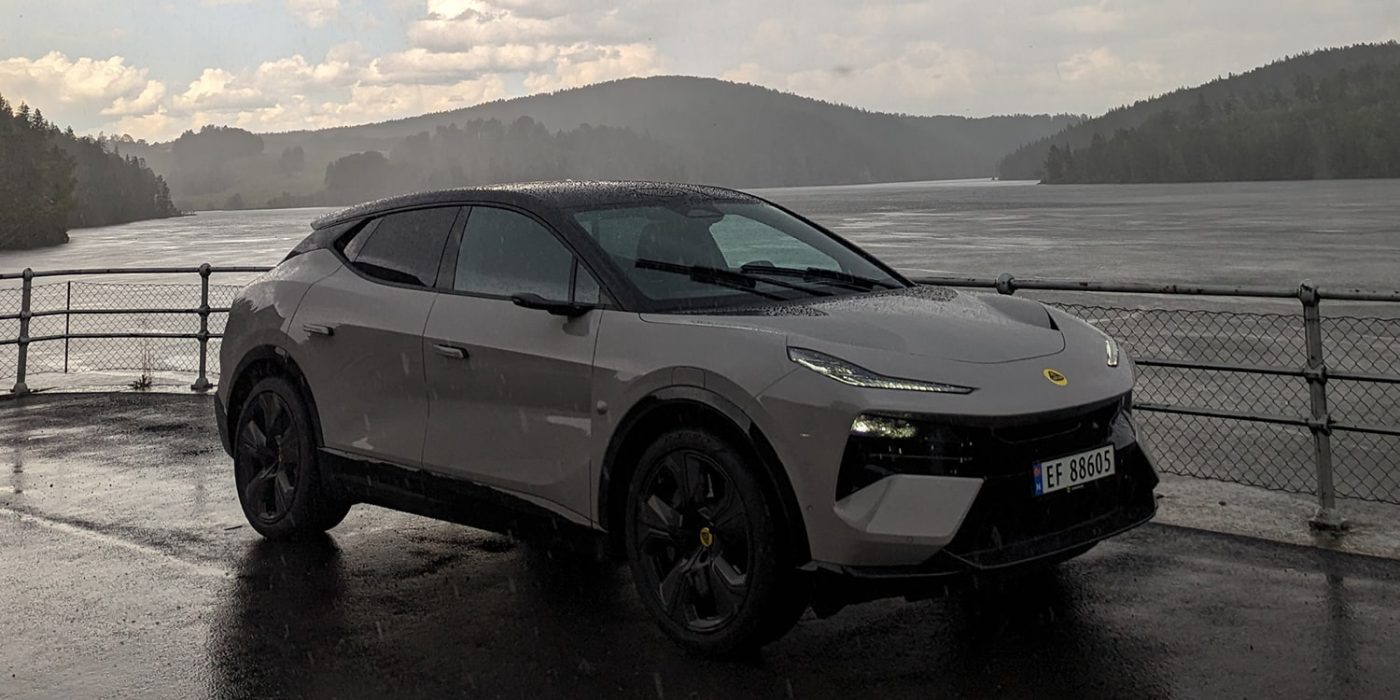
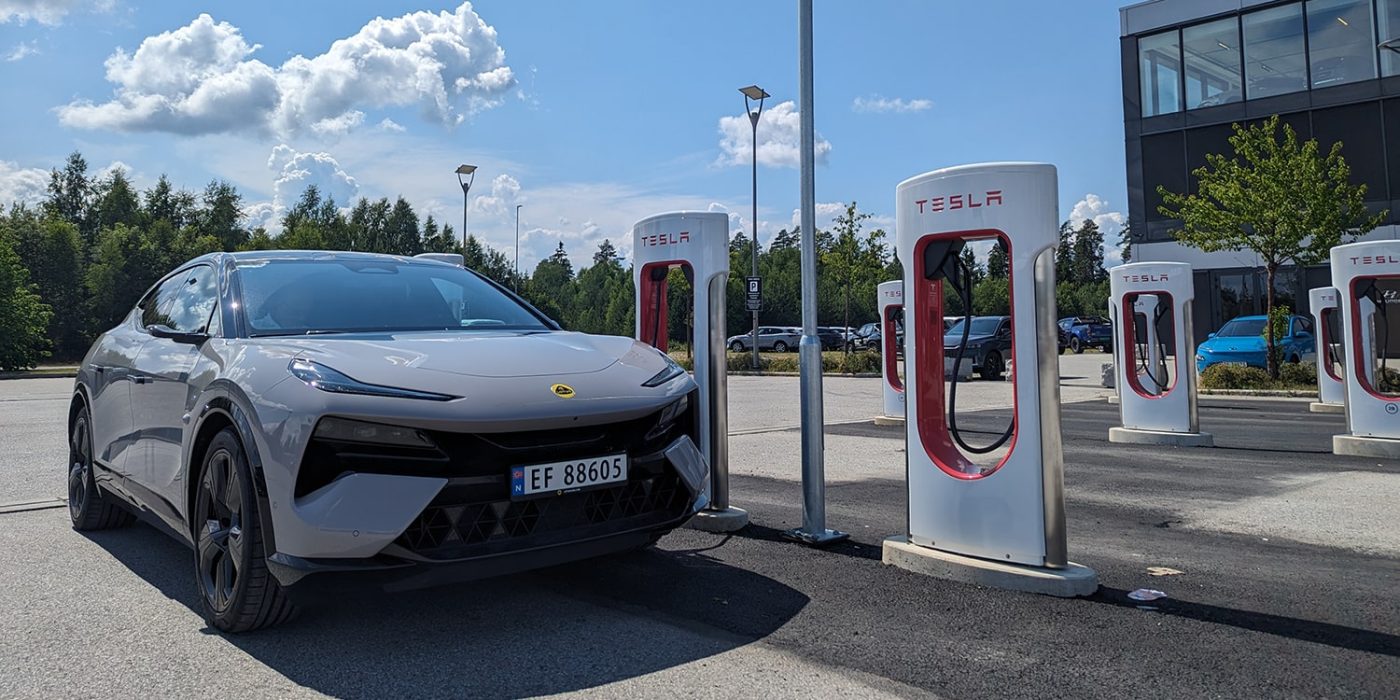
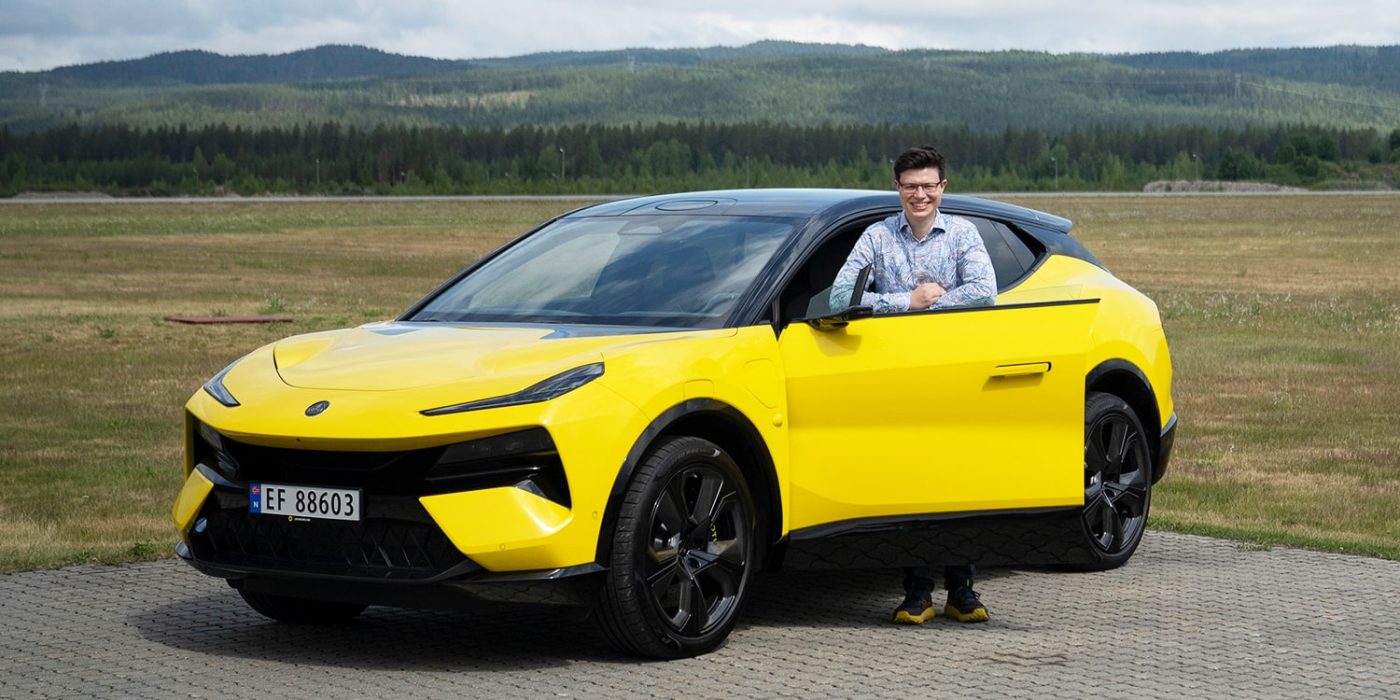
If you want maximum everyday utility, however, it is better to go for the 5-seater because, in addition to the extra seating space, you also gain more storage space thanks to the fold-down seats. The individual seats in the 4-seater configuration cannot be folded down due to the electric adjustment, reducing storage space from a possible 1,532 litres to 611 litres. If that’s not enough, the SUV can tow up to 2.25 tonnes.
For the drivers
The steering and suspension of the Eletre are not “Chinese” at all: sporty, firm, direct instead of soft and synthetic. In combination with the suspension and active roll stabilisation, taking curves is really fun. The handling is excellent. Due to the rear-axle steering, it seems as though the car shrinks by half a metre – the turning circle is impressively small for such a large car. However, it cannot hide its width, which is often a hindrance on narrow country roads or in the presence of oncoming trucks. And tight parking spaces are no fun either.
In contrast, the acceleration tests on a runway, which Lotus provided so that we could also experience the top speed of 265 kph, were really fun. The two-speed gearbox, which shifts relatively late, is striking; only at around 130 kph does a short jolt go through the vehicle. By comparison, if you step on the pedal in the Porsche Taycan, it shifts into its second gear at 90 kph.
The deceleration is almost as impressive as the acceleration: if you so much as stroke the brake pedal, the ceramic brakes bring the 2.5-tonne colossus to a halt as quickly as if you were throwing an anchor out of the boot.
The digital mirrors do their job well, only the position is unusual. Even on day two, I always looked out of the car at the empty space where the mirrors are supposed to be. But instead, there are only small cameras. The corresponding displays are on the inside of the doors, and on the left side, it is very close to the steering wheel – this will certainly take some time to get used to.
I was unable to experience the full potential of the 900-hp car in Norway due to speed limits. I could not even test the 0-100 kph acceleration (2.95 seconds in the Eletre R and 4.5 seconds in the S version), as the speed limit is 80 kph on country roads. A positive side effect was the low fuel consumption, but after 500 kilometres with an average speed of just over 60 kph, the consumption was a hefty 23.5 kWh/100km. Thanks to the 112 kWh battery, however, a range of almost 480 kilometres is realistic. Even with this consumption.
Charging
Range and Norway’s speed limits are a luxury problem for the average car tester: the battery can’t be drained as quickly here, so I could only start my charging test with a 50 per cent State of Charge (SoC). I was able to charge with 125 kW up to 70 per cent. At a Tesla Supercharger, on the other hand, the battery only accepts 80 kW permanently. That is probably due to the 800-volt architecture, which relies on a DCDC converter for 400 V infrastructure, which “only” produces 80 kW. But since, apart from Tesla, all other charging stations above 150 kW use 800 volts, this is a rather minor problem.
Thanks to the standard 22 kW AC charger, the Eletre can be fully charged in a good six hours at the wallbox at home – the otherwise widely used 11 kW would definitely be too little for this battery size.
The charge planner looked useful – it provides a SoC forecast for all intermediate stations and gives charging times for charging stops. Clever: You can set the percentage with which you want to arrive at the destination or charging stations, as well as the time that the navigation system should take into account for starting and ending the charging process in the route planning.
Software is quick, but leaves potential untapped
The user interface impresses with its responsiveness from the very first moment. No jerks. No pause for thought. It just runs. The features are solid: the navigation system plans usable EV routes, including charging status and time forecasts. The music streaming services leaves hardly anything to be desired, and charging breaks can be spent with video games like Beach Buggy Race.
Especially the sound system with Dolby Atmos is highly impressive – it is comparable to the spatial sound experience known from cinemas, which brings music, vocals or even dialogue specifically from different directions. Lotus is thus the second car manufacturer after Mercedes to bring Dolby Atmos into a vehicle. It is a bit disappointing that video streaming is not (yet) available in the Lotus Eletre. It is still being worked on, and customers can expect it soon via OTA, according to the engineers on site. With the sound system and the high-resolution screen, all the prerequisites for a cosy movie night at the charging station are in place in terms of hardware – now only the software has to come.
In general, the infotainment falls short of the hardware’s capabilities, especially in terms of features. For example, the voice control is still overwhelmed with some common commands, the display bar for the front passenger can currently only be used to fast-forward and rewind songs, the head-up display still lacks a navigation view, and the speedometer display also has a lot of potential for customisation.
However, there is at least a good internet connection – my smartphone showed me a good 100 Mbit/s when using the vehicle hotspot, so the large amounts of data for OTA updates should be able to land in the vehicle quickly.
Assistance systems: To be continued…
Regarding driver assistance systems, the picture is similar to the infotainment: powerful hardware is available on a massive scale: Cameras, several retractable lidars, redundant Nvidia computing power. Unfortunately, I cannot yet judge the quality of the software that is supposed to bring this technology to life after this test – due to the sometimes poorly marked Norwegian country roads, the Lotus team had not yet activated the assistance functions for this test event. However, level 2 should be available when the car is delivered to the customer, and level 3 is being aimed for.
Conclusion
The Eletre is a genuine Lotus that no longer has anything to do with a Lotus. Sounds strange, but it is true. What does that mean? It may be a heavy, tall, four-doored SUV, but it remains incredibly sporty. It handles better than pretty much any Lotus combustion engine, and in the turns, the suspension, stabilisers and rear-axle steering do a super job, making the car feel much lighter, shorter and lower than it objectively is.
Thanks to the huge battery, even longer full-power stages are feasible, which brings us to another Lotus virtue. The Eletre has a fun potential that surely 90 per cent of all drivers can’t even begin to use, as you’d have to be an amateur racer. But it combines impressive driving performance with storage space and comfort. Two words that have probably never been mentioned in connotation with a classic Lotus.
On the contrary, with the Eletre, Lotus is reinventing itself and will open up many new customer groups – similar to what Lamborghini did with the Urus or Porsche with its SUVs: There, too, no one initially thought that a lifestyle SUV would suit the brand; there, too, I’m sure there were one or two die-hard fans who said in a huff: “I’ll never buy one of those!” Today, both Porsche and Lamborghini sell more SUVs than classic sports cars, so the decision wasn’t that wrong.
To some extent, Lotus is simply using a winning formula whose effectiveness has been tested by various other carmakers and bringing it, only logically in 2023, into the electric age. At the end of the day, most customers will probably reach for the Eletre because it is relatively “cheap” in the field of luxury SUVs despite its electric drive: from 96,000 euros, you can call it your own – for this money, you can’t even get a combustion engine with comparable performance from most OEMs.
And so, at the end of the day, the brand’s charisma could only be the icing on the cake, but the purchase decision could be based primarily on the price-performance ratio. In the end, however, this also suits Lotus, because some of the two-seaters were already well below the price level of the competition.
Update 18 April 2024
Lotus has revealed the prices of its electric SUV Eletre in North America. Customers are invited to customize their vehicle and place an order from now and can expect to receive their cars beginning in Q4 this year. The standard Eletre starts at an MSRP of $107,000 (CAD 126,800). Pricing for the Lotus Eletre R starts at $145,000 (CAD 178,500).
lotuscars.com (update)


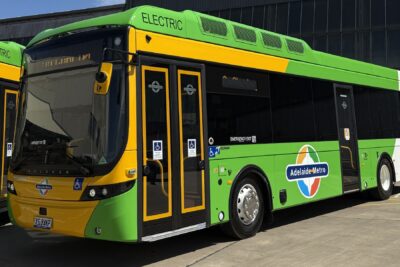

0 Comments